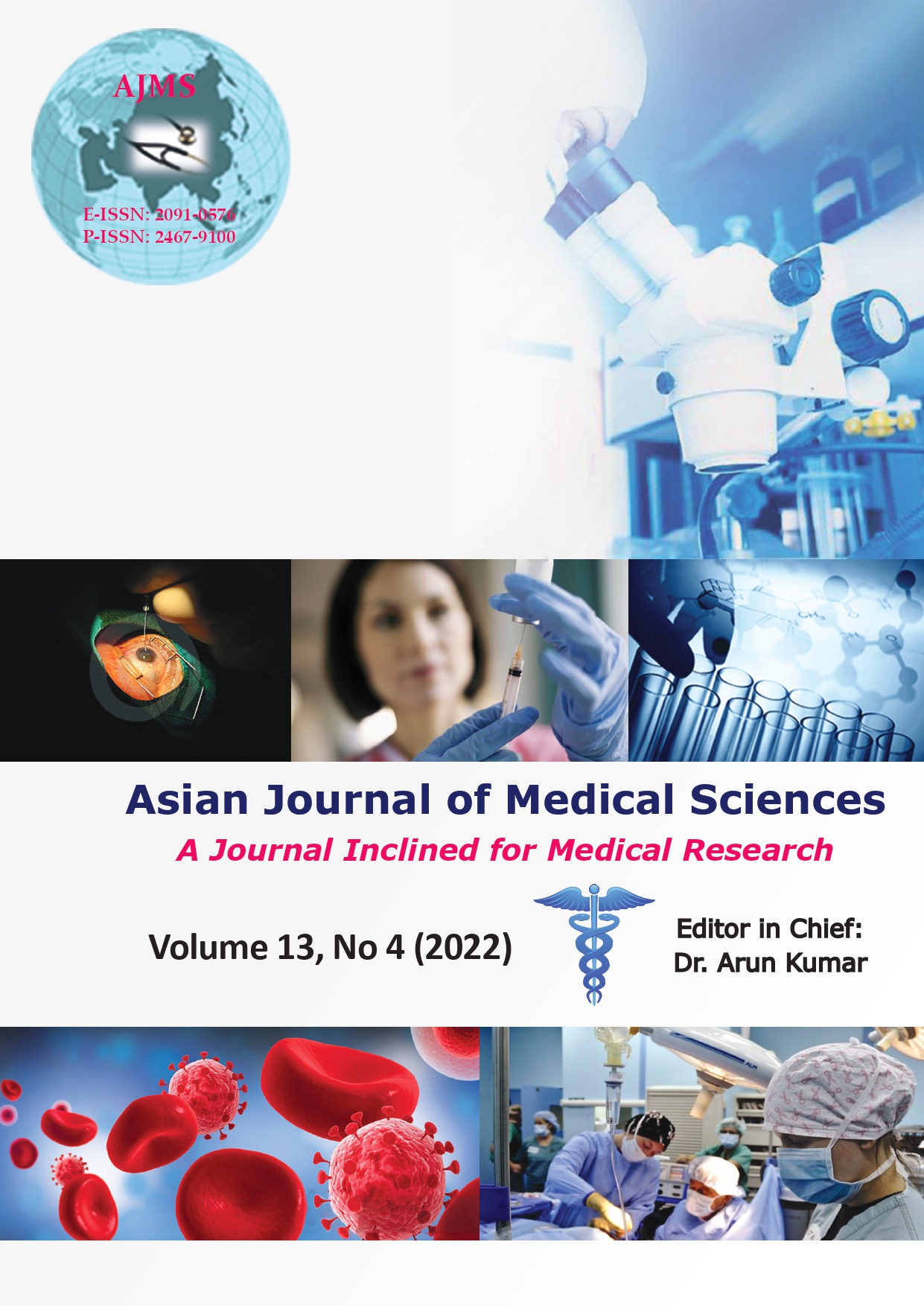Correlation of C-reactive protein and BMI with severity of diabetic retinopathy
Keywords:
Body mass index, C-reactive protein, Diabetic retinopathyAbstract
Background: Diabetic retinopathy is one of the complications of diabetes mellitus (DM). The pathogenesis has been attributed to be due to inflammation recently. Similarly, obesity has been found to be risk factor for diabetic retinopathy.
Aims and Objectives: The aim of the study was to evaluate the changes of C-reactive protein (CRP) in Type 2 DM patients with diabetic retinopathy and to evaluate the relationship of body mass index (BMI) with diabetic retinopathy.
Materials and Methods: This was a hospital-based cross-sectional study of 98 patients with Type 2 DM both newly diagnosed and known case of DM. The patient’s fundus findings were recorded, CRP and BMI were measured to study the correlation.
Results: This study showed that the mean value of CRP in patient without diabetic retinopathy was 2.28 mg/L while it was 3.01 mg/L in patients with diabetic retinopathy. Among the patients with diabetic retinopathy, the mean CRP was 2.76 mg/L in NPDR, 2.93 mg/L in NPDR with CSME, 3.6 mg/L in PDR, and 3.9mg/L in PDR with CSME. The mean BMI was 22.63 Kg/m² in patients without diabetic retinopathy and 22.92 Kg/m² in patients with diabetic retinopathy.
Conclusion: The study shows that CRP levels correlate with stage of diabetic retinopathy. The higher levels CRP were found in patients with PDR and CSME presumably due to the higher level of inflammatory activity in retina. Further our study found no correlation of BMI with diabetic retinopathy.
Downloads
Downloads
Published
How to Cite
Issue
Section
License
Copyright (c) 2022 Asian Journal of Medical Sciences

This work is licensed under a Creative Commons Attribution-NonCommercial 4.0 International License.
Authors who publish with this journal agree to the following terms:
- The journal holds copyright and publishes the work under a Creative Commons CC-BY-NC license that permits use, distribution and reprduction in any medium, provided the original work is properly cited and is not used for commercial purposes. The journal should be recognised as the original publisher of this work.
- Authors are able to enter into separate, additional contractual arrangements for the non-exclusive distribution of the journal's published version of the work (e.g., post it to an institutional repository or publish it in a book), with an acknowledgement of its initial publication in this journal.
- Authors are permitted and encouraged to post their work online (e.g., in institutional repositories or on their website) prior to and during the submission process, as it can lead to productive exchanges, as well as earlier and greater citation of published work (See The Effect of Open Access).




